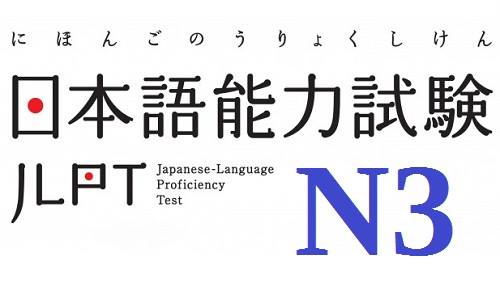JLPT N3 Grammar lesson 18
JLPT N3 Grammar lesson 18. Hi everyone! In this article, Learn Japanese daily will introduce you to the JLPT N3 Grammar.
Let’s take a look at the next 5 structures.
Contents
JLPT N3 Grammar lesson 18
Structure 86 :
To sum up。(なぜなら/なぜかというと/どうしてかというと)、the reason +からだ
Explanation:
~ If you’re asking why then it’s because ~
For example:
今日、彼は学校を休みます。なぜなら、彼は病気だからです。
Kyou, kare wa gakkou wo yasumimasu. Nazenara, kare wa byouki dakara desu.
Today, he is absent from school. The reason is because he is sick.
あの子は画家になりたい。なぜかというと、あの子は絵を描くのが好きだからです。
Ano ko wa gaka ni naritai. Nazeka to iu to, ano ko wa e wo kaku no ga suki dakara desu.
That child wants to be a painter. The reason is because she likes drawing pictures.
Structure 87 :
N1はもちろん、N2も
[文]のはもちろん、~も
Explanation:
N1 is obviously ~ , but N2 is, too.
As a matter of course N1 is obviously ~, typical, then N2 is also ~ .
For example:
彼女は日本語はもちろん、英語も話せる。
Kanojo wa Nihongo wa mochiron, Eigo mo hanaseru.
She can speak not only English, but also Japanese.
私はすしはもちろん、さしみも食べられない。
Watashi wa sushi wa mochiron, sashimi mo taberarenai.
I can’t eat sushi, let alone sashimi.
Structure 88 :
(V/N/Aい/Aな)普+ばかりか…(も)/ばかりでなく…(も). Note:Nだ、Aだな
Explanation:
Not only ~ but also ~
Used to mention when a thing, situation ascends from a lower degree to a higher degree.
For example:
このアパートは広いばかりか、値段も安いです。
Kono apaato wa hiroi bakarika, nedan mo yasui desu.
This apartment is not only large, it’s also cheap.
彼女は美しいばかりか、優しいです。
Kanojo wa utsukushii bakarika, yasashii desu.
She is not only beautiful, but she is also kind.
Structure 89 :
(N/[文]の)+に+比べ/比べて~
Explanation:
Compared to A, B is ~
Used to mention B by comparing with A.
For example:
青いシャツに比べて、赤いシャツはあなたに似合う。
Aoi shatsu ni kurabete, akai shatsu wa anata ni niau.
The red shirt looks better on you compared to the blue one.
前のコンピューターに比べて、新しいコンピューターは使いやすい。
Mae no konpyuutaa ni kurabete, atarashii konpyuutaa wa tsukaiyasui.
The new computer is easier for me to use than the old one.
Structure 90 :
(N/[文]の)+に+対して/対し/対しては/対しても/対するN
Explanation:
To N,
Used to direct at/ to that situation, in response to that situation, followed by an expression show an effect on it such as a behaviour, an attitude directed at/ to N.
For example:
彼はよくお客さんに対して失礼なことを言う。
Kare wa yoku okyakusan ni taishite shitsureina koto wo iu.
He often says rude things to customers.
山田さんは子どもに対しては優しい。
Yamada-san wa kodomo ni taishite wa yasashii.
Yamada is gentle with children.
Above are the JLPT N3 Grammar lesson 18. If there is anything that you find it hard to understand, feel free to common below.
Check out other JLPT N3 Grammar lessons in section: JLPT N3 Grammar